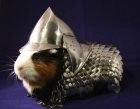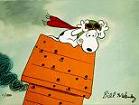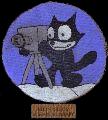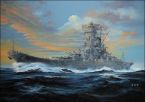TheElf
Posts: 3870
Joined: 5/14/2003
From: Pax River, MD
Status: offline

|
quote:
ORIGINAL: Alfred
quote:
ORIGINAL: Wirraway_Ace
quote:
ORIGINAL: Alfred
quote:
ORIGINAL: EUBanana
... The 300 pass rule seems to exist alright. You can work around it, sure. You can split your CVs up so your CAP does not exceed 300 fighters (which is admittedly a pretty damn big bunch of CVs, so it's probably not that onerous... unless near land bases, which still might not be that onerous I suppose given the historic role of CVs). It doesn't take a rocket scientist to work out that if the code will only count the first 300 fighters, that having 500 is wasting your time...
Again you refer to a 300 CAP fighter limit. People who don't pay close attention or for whom English is a second language may not realise that you are totally wrong.
1. There is a 200 flight pass limit, which michaelm especially upped to 300 for the benefit of rader-GreyJoy.
2. Each flight can comprise up to 8 planes.
This means that excluding the special exe provided to rader-GreyJoy, the theoretical maximum number of CAP fighters who might participate in combat is 1600 aircraft.
Not all flights will necessarily engage in combat. There are several factors for this, such as not arriving in time etc. Nonetheless, under the existing main code, it is only the number above 1600 which would be quite redundant.
Alfred
Alfred,
I always respect your knowledge and perspective; however, are you truly saying that the current CAP vs Escort model works well enough that most players with at least a general eye towards history will not see very unusual results as the endgame approaches?
mike
My overall position is as follows.
1. Gary Grigsby game designs are always very dependent on die rolls. It is therefore practically guaranteed that any game design of his will experience some very odd outcomes. Players either accept these odd outcomes and tailor their play accordingly or they should not bother playing any of his games.
2. Personally I have no problems with odd outcomes. War is a very messy business and many events which are unforeseen and beyond the participants control occur. IRL, wargaming particular scenarios in advance do not fully predict what will subsequently occur when the actual operation is mounted.
3. This game is very abstracted, it is not a simulation. Within the abstracted game design parameters, the air combat model is close enough to be good enough. To make the air combat model more "realistic" for those who find it to be quite unsatisfactory, many things would have to be un-abstracted. Things such as (there are many more):
- introduction of avgas into the game
- breakdown of supplies into the various different ordnance carried by different aircraft models
- abandonment of the game's point to point air combat with area combat as per the naval combat side
These are things which simply cannot be accommodated within the current legacy code.
4. This game is not a tactical representation of the PTO. Invariably when people complain about an aspect of the game (not just the air combat model) their suggested fix is always to introduce more tactical and micromanagement elements into the game. That is fundamentally a dead end for these reasons:
- it harms future sales of the game. There is no one who decides to not buy the game because it is not detailed enough but there are potential purchasers who do not buy the game precisely because it is already too detailed with too much micromanagement
- adding more tactical elements is more likely to reduce the playability of the game rather than enhance its playability. The existing 50 or so regular posters who might relish the additional tactical details and who are very vocal advocates of playing only PBEMs, are not representative of the much broader and generally silent customer base
- coding and grafting additional tactical elements onto quite old legacy code is a complex task. Solutions which might cater to the small but extremely vocal PBEM crowd are not necessarily valid for the AI crowd and therefore much thought and play testing is always required. More importantly there is no one around to do the work
5. Complaints invariably arise when a player experiences an outcome which is contrary to their expectations. These expectations are preconceived and are usually based on wrong premises and errors in knowledge or understanding. Rather than examining whether their expectation was valid they immediately jump to the conclusion that because their own expectation and play simply could not be the problem, the game itself must be at fault. Because they fail to properly self analyse their own play decisions, these players fail to notice what can be done to avoid the failures they experience.
6. The code requires arbitrary limits to be incorporated. That is how any software operates. Players who are determined to "game" the code, or at least explore its outer limits will always find a way to highlight code issues. No solution will ever remove this behaviour and it always carries within it the seeds of creating greater unintended problems elsewhere.
As I said above, taking into account the overall picture, the air combat module is close enough to be good enough. Assemble a new AE development team, give them the necessary resources and time to do the job, and then we can start to consider real changes to the air combat module. Until then skillful play is the order of the day. And accept that Grigsby die roll outcomes are a fact of life.
Alfred
Edit:fixed spelling and "grammar" in point 4
Though I think I have said all these same things before and in this very thread, this is a much more concise, lucid, and well articulated summation. Thank you Alfred. You have a gift sir.
_____________________________
IN PERPETUUM SINGULARIS SEDES  |
 Printable Version
Printable Version



















 )
) 





 New Messages
New Messages No New Messages
No New Messages Hot Topic w/ New Messages
Hot Topic w/ New Messages Hot Topic w/o New Messages
Hot Topic w/o New Messages Locked w/ New Messages
Locked w/ New Messages Locked w/o New Messages
Locked w/o New Messages Post New Thread
Post New Thread